Spain is most often thought of as a highly appealing destination, because of its beautiful beaches, fabulous food, beguiling cities and fascinating culture. There is, however, another side to Spain that often stays hidden.
The most dangerous animals in Spain are something to be aware of if you plan to venture off the beaten track during your stay.
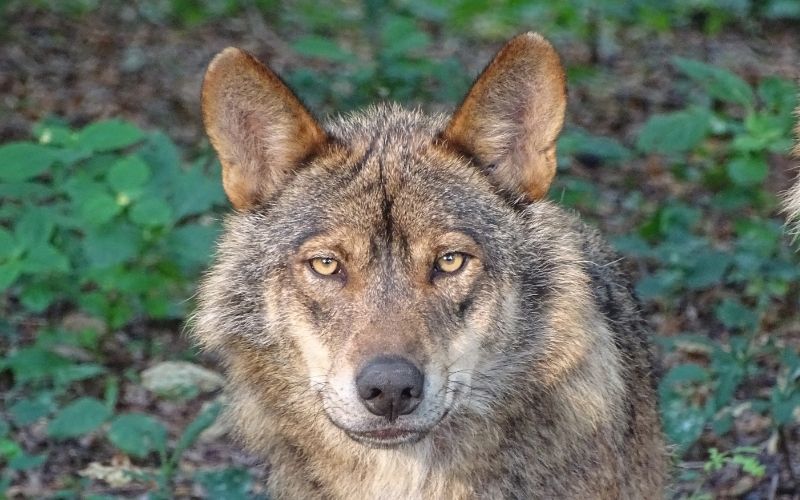
Though your chances of an encounter while holidaying on the Costa is minimal, those exploring the Spanish countryside, rocky areas, forests filled with pine trees or mountains should be aware of what can cause humans harm.
In some cases, an encounter with one of the most dangerous animals in Spain means you should seek medical attention immediately. So it’s certainly helpful to be capable of identifying what might have bitten you or a companion.
From venomous snakes to other dangerous creatures that can cause a nasty sting, abdominal cramps, a painful bite or even breathing difficulties, this guide takes you through the main Spanish species than can be life threatening to humans.
If you are bitten or stung and you’re not sure what the culprit was, it’s best to seek medical advice anyway, as the venom from some species can even be fatal in rare cases.
This especially applies to very young children, the elderly or anyone whose immune system is already compromised (such as those receiving treatment for cancer).
Before you head off into the Spanish wilderness, it’s best to be aware of the creatures you may come across there, as well as how to identify them and what to do if you do encounter one.
In the vast majority of cases, these creatures won’t attack humans unless provoked, but they may also defend themselves if they are surprised.
So keep your eyes peeled, especially in rocky areas, countryside or the mountains!
18 Most Dangerous Animals in Spain
Contents
The most dangerous animals in Spain include arachnids like spiders and scorpions, flies including mosquitoes, wolves, snakes, wild boars – and even a caterpillar.
Here are 18 of the most dangerous creatures you could encounter while staying in Spain.
Spiders
Spain can be filled with creepy crawlies, especially during summer. Here are the Spanish spider species you should look out for if you want to avoid what may at least be an extremely painful bite.
Brown recluse spider
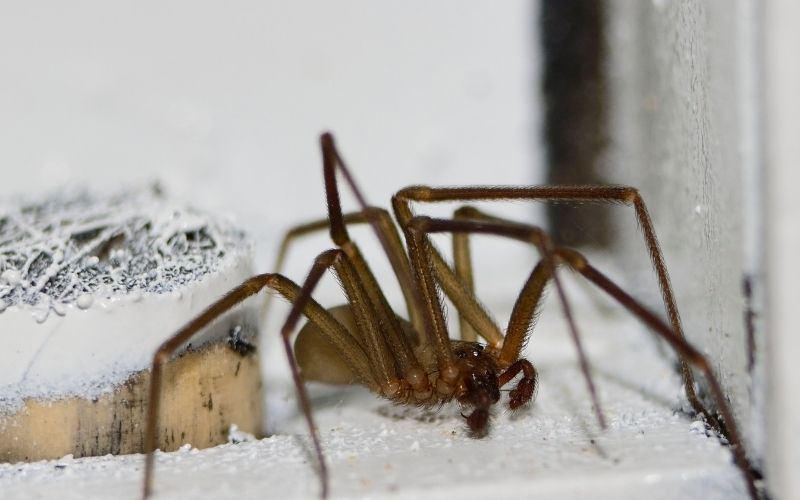
Also known as the Mediterranean recluse spider, this species tends to lurk in dark corners. This is a fairly dangerous spider, as its venom can cause blistering of the skin, as well as other unpleasant side effects.
Like its African recluse cousins, this spider may have distinctive markings, earning it the name fiddle-back or violin spider. If a brown recluse spider bites you, it’s wise to seek medical attention as soon as possible.
Wolf spider
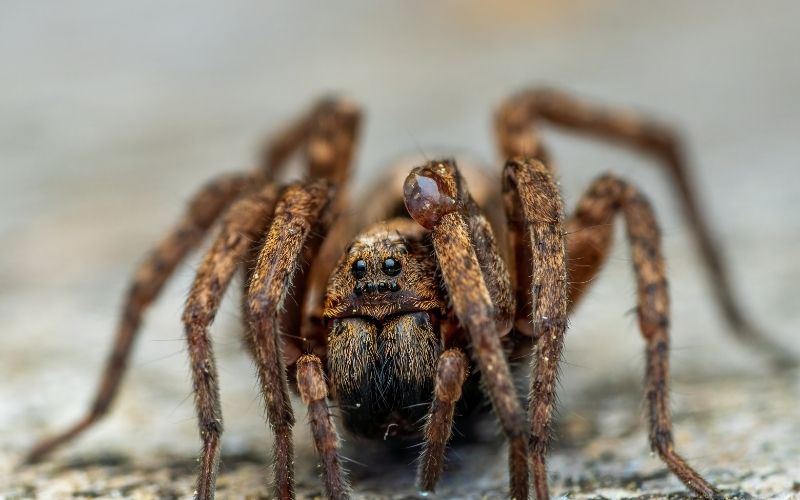
While the wolf spider isn’t one of Spain’s two most dangerous spiders, its sheer size can terrify those not used to large arachnids.
They also tend to actively hunt prey, and are thus more likely to be seen than other, shyer species, although they do tend to retreat from human contact.
The good news is that the wolf spider’s bite isn’t too harmful to humans, but as may cause pain it’s best avoided. Like any bite, there is also the risk of an allergic reaction or infection.
Mediterranean black widow spider
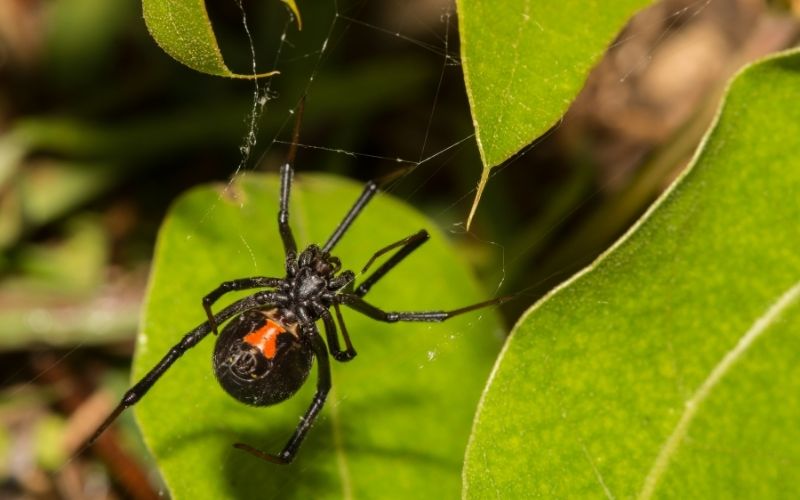
The European or Mediterranean black widow can be a serious threat to humans, in extremely rare cases. Usually this applies to vulnerable people such as those who are very young or old.
Unlike those found in South America, Asia or Australia, the species resident in southern Europe has red or orange spots on a glossy black body. Like most black widows, it is a fairly small spider.
Like most species, black widows only attack humans when they feel threatened, so do look out for these red and black creepy crawlies if you’re spending time in the Spanish countryside or on farmland.
A single bite can be very painful and symptoms may include abdominal pain, sweating, nausea, fever and tachycardia.
Seek immediate medical attention if someone vulnerable is bitten. It’s best to get anyone checked over as soon as possible, in any case.
For more about Spiders in Spain – check out our article.
Scorpions
A couple of scorpion species in Spain can deliver at least a painful sting, though neither is normally any worse than a bee or wasp sting.
Mediterranean scorpion
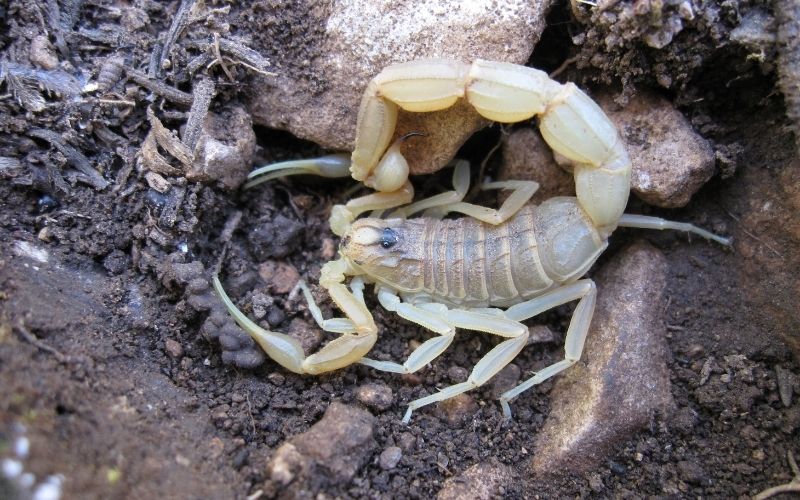
This yellow scorpion is native to various parts of the continent, particularly northern Spain. It has a painful sting which is comparable to a wasp or bee sting.
Being stung by a Mediterranean scorpion is rarely fatal, and as with bees and wasps, tends to be restricted to cases where an allergic reaction develops.
European black scorpion
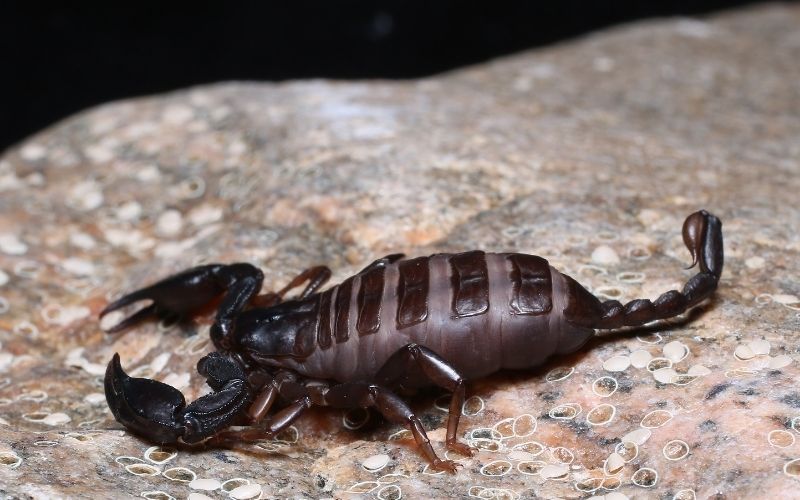
The European black scorpion may also be found in Spain. It has a black body and yellow-brown legs. A wasp or bee sting is said to be more painful than that of the European black scorpion.
Unlike other creatures, it tends to frequent built-up areas, where it often hides in holes like those found in crumbling walls.
Flying insects
Spanish flying insects to watch out for include the infamous Spanish fly – which is actually a green beetle – as well as the tarantula hawk wasp and the striped tiger mosquito.
Spanish fly
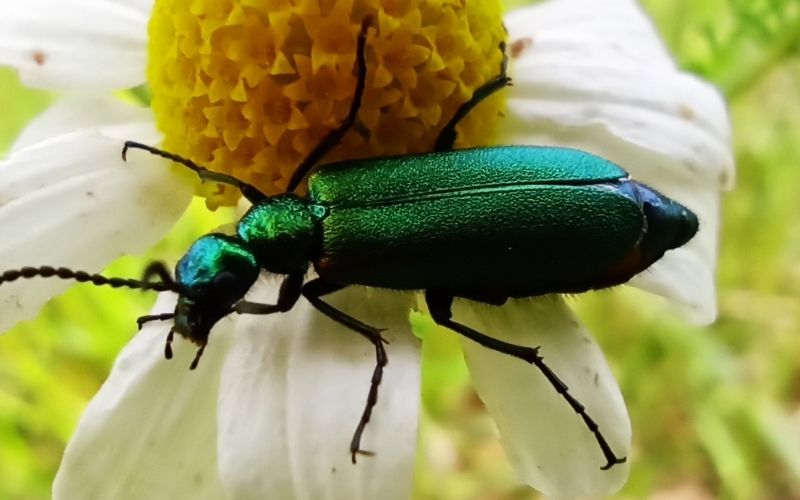
The name Spanish fly is somewhat misleading, as it’s not actually a fly at all.
It is, in fact, an emerald-colored beetle, and is infamous for causing a number of deaths throughout history. Incredibly, it was once used as an aphrodisiac!
A Spanish fly is a blister beetle that is only dangerous if ingested.
Although it only tends to be fatal if consumed in large quantities, the cantharidin toxin it contains is highly poisonous. If you do inadvertently swallow one, it’s therefore best to seek medical attention.
Tiger mosquito
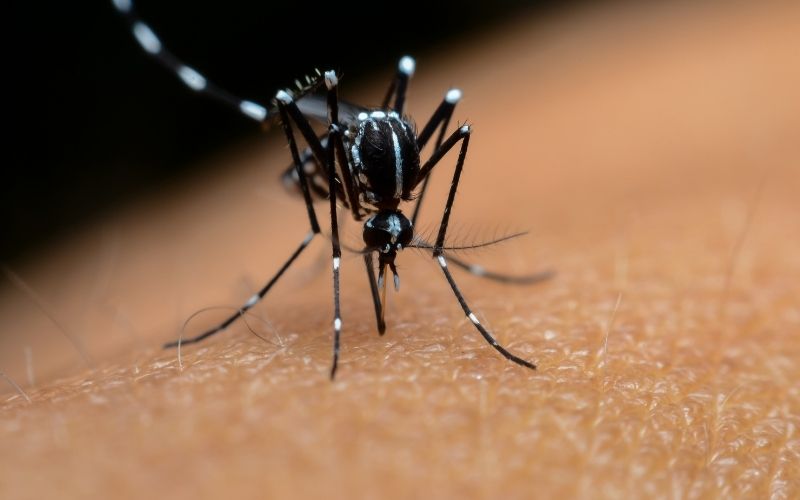
The tiger mosquito tends to be Spain’s most aggressive type, and is a contender as most dangerous animal because of the diseases it can transmit to humans. These include chikungunya, dengue fever, zika and yellow fever.
It has a black body and legs, with thin white stripes on both, and tends to hover near water, especially around sunset.
Using insect repellent and covering your limbs with clothing is thus a good idea – not least because the tiger mosquito’s bite is also pretty painful.
Tarantula Hawk Wasp
Wasps are generally only dangerous when their sting triggers an allergic reaction, but the tarantula hawk wasp can deliver one of the most painful stings of all.
Despite the pain, it is also harmful only when an allergy to the venom is present.
It’s not striped like the average wasp: rather it has brown wings covering a long, blue-black body.
The sting alone may measure up to seven millimeters, while the overall length may reach five centimeters.
The tarantula hawk may be known as a spider wasp, even though the lycosa tarantula species are eight-legged arachnids instead of insects.
Caterpillars
Caterpillars? Oh yes. The fine hairs of the processionary caterpillar can indeed be a threat to humans, even if you don’t actually get too close to one…
Processionary caterpillar
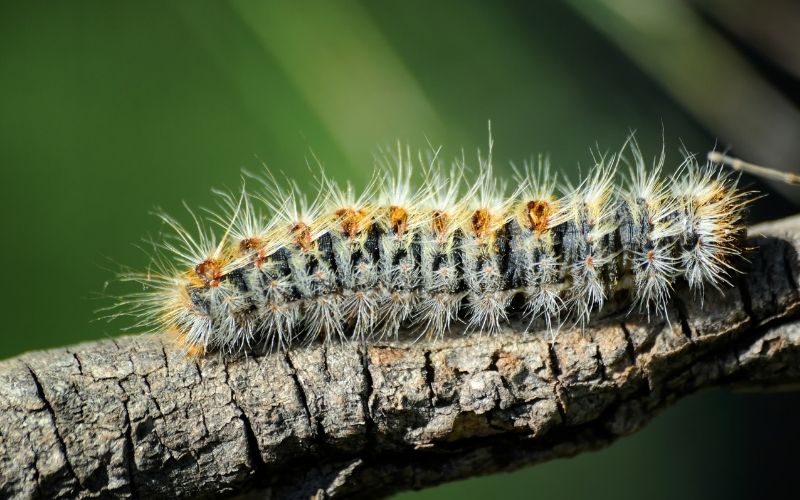
These hairy caterpillars may seem harmless, but they’re a force to be reckoned with.
The fine hairs of the processionary caterpillar are toxic to humans, and can become embedded into the skin due to the ‘hooks’ on them.
Because of these hairs, it’s dangerous to touch a processionary caterpillar nest. They can also be carried on the wind.
If they do land on your skin, the hooks mean the individual hairs are difficult to remove.
Sometimes the caterpillar expels it fine hairs because it feels threatened, which is another reason to stay away. Pets may also suffer a painful reaction if affected.
The preferred habitat of the processionary caterpillar is somewhere with lots of pine trees, and they live throughout mainland Europe as well as on the Iberian peninsula.
Because of where they live, they are sometimes called pine processionary caterpillars.
If you come into contact with this caterpillar – or its fine hairs – you could experience symptoms like an allergic reaction causing a skin rash, a cough or irritation of the eyes if affected. Each embedded hair can also feel like a painful nip.
When such symptoms don’t subside, medical attention may be required. Otherwise you can bathe the skin with warm water to help remove the hooked hairs, and take over-the-counter medications to treat any resulting pain.
Snakes
Spain has a number of endemic, venomous snake species to look out for.
Varying between half a meter and two meters in length, how dangerous their bite is does vary by species – not least because some have rear rather than front fangs.
Montpellier snake

This venomous snake is actually fairly benign as its fangs are found at the rear of the mouth. It is mostly found in northern Spain. Up to 2 meters in length, this snake can be an alarming sight.
The Montpellier Snake has a white underbelly and its back is usually several shades of olive in colour. Due to the rear fangs, it’s not really a threat to humans.
Asp viper
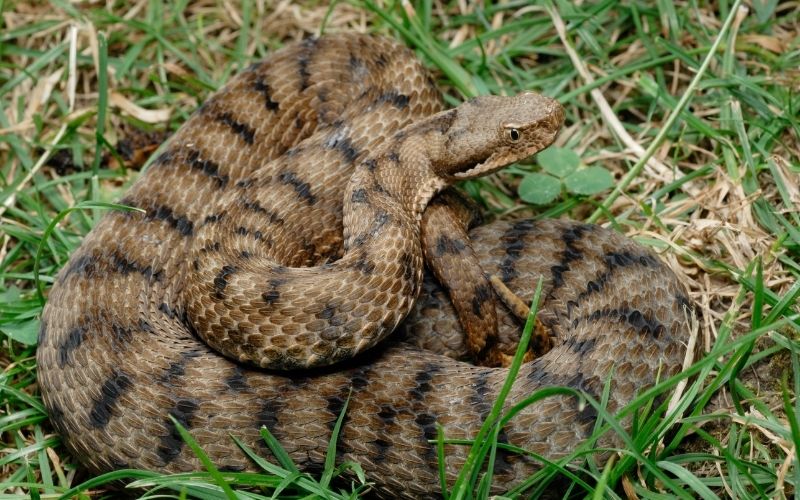
Found in the south west of Europe, this species may also be referred to as the aspic viper or European asp. It has a triangular head and a zigzag pattern on the back.
If bitten, do seek medical attention immediately as it’s a pretty poisonous creature.
That said, it’s not something to worry about too much as human encounters with this snake are very rare.
False smooth snake
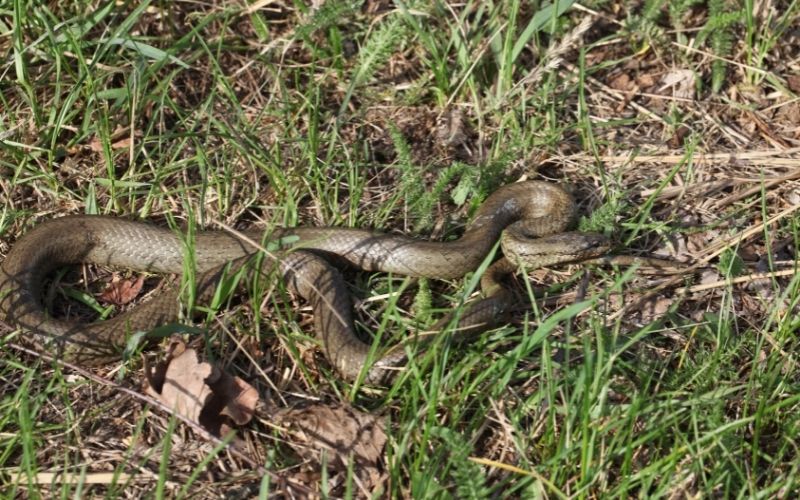
The false smooth snake also tends to stay away from humans. It is only a mildly venomous species, and as it has rear fangs it’s not too much of a threat to humans.
This hooded snake has a smooth, olive-brown body and a darker, distinctive head, and is mostly found in Catalonia.
Seoane’s viper
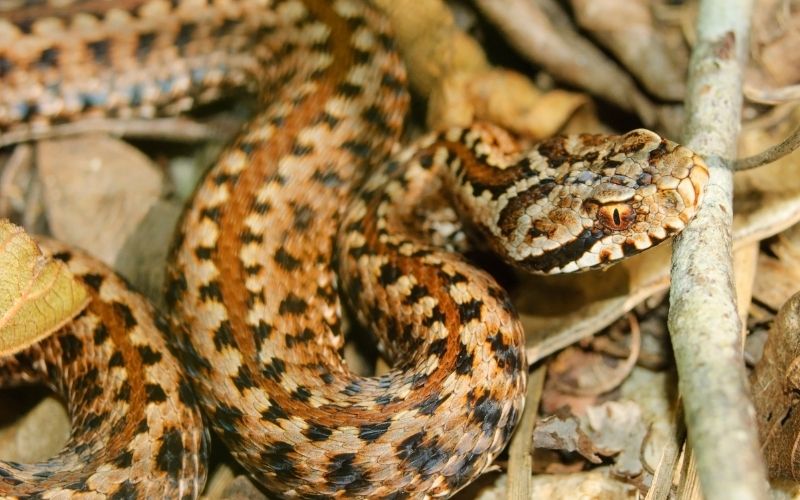
Seoane’s viper is another species endemic to Spain, particularly in certain areas including the north and Basque country.
It is a snub-nosed snake with a patterned brown back, and variations include zigzag, striped and plainer bodies.
Its bite isn’t too threatening to humans, except when victims are very old or young or the bite induces an allergic reaction.
As it’s only around half a meter long and sometimes well camouflaged, it may be more difficult to spot one that’s lurking.
Lataste’s viper
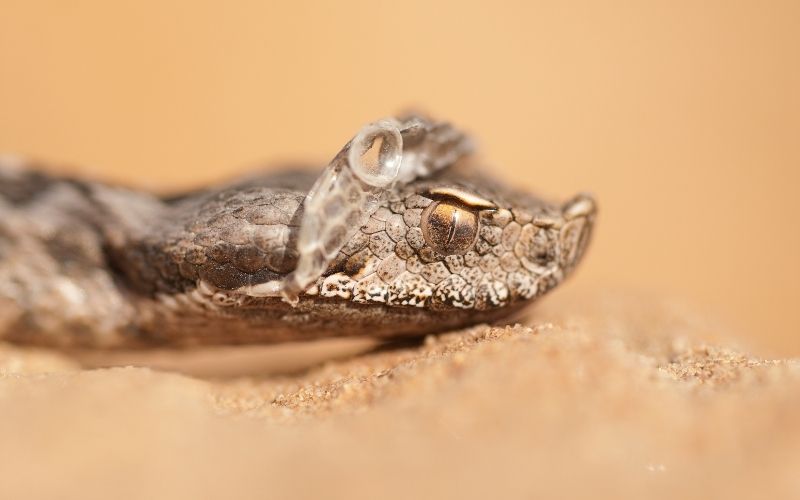
Lataste’s viper is another of the smaller venomous snakes found throughout the Iberian peninsula.
It may be up to around 70 centimeters long and has a grey body with a zigzag pattern and a yellow tail tip.
Dry locations are its favorite habitat, including rocky areas and sometimes sand dunes.
A man in Portugal was bitten by one in 2021 and was in a critical condition, so it’s one to avoid. Do seek medical attention immediately if bitten.
Read our in-depth guide to Snakes in Spain here
Wolves
Iberian wolf

Wild wolves are found in Spain. The grey Iberian wolf lives in the north west of the country, and its population is Europe’s largest wolf population.
Like any dogs or wild wolves, a bite can cause permanent harm as well as being very painful, and there is also the risk of infection.
Wild boars
Spanish wild boar
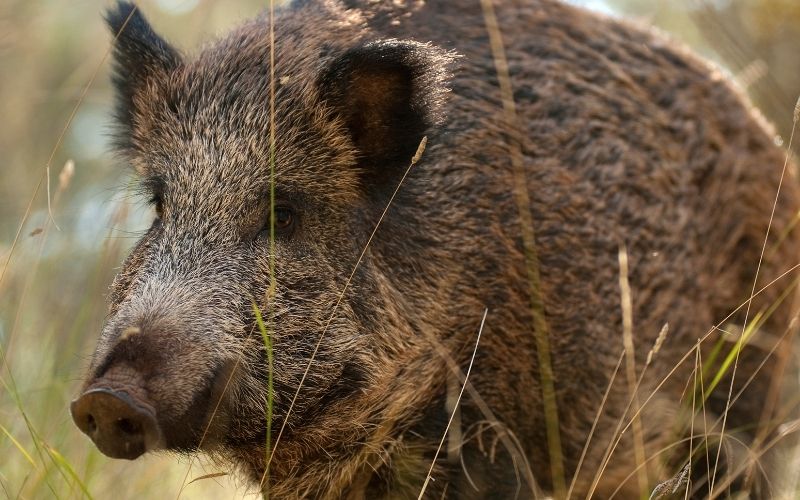
Wild boars have become a serious pest in some parts of Spain during recent times.
In fact they made the global headlines when singer Shakira was attacked by a pair in a Barcelona park.
The boars may also look through trash to find food, leaving a lot of mess behind them. With this in mind, it’s hardly surprising that people are permitted to hunt these creatures.
While their preferred habitat is any kind of forest or shrubbery, they are known to venture into urban spaces such as cities and resorts.
In Spain, injuries and even deaths are often caused by wild boar attacks.
If you do encounter one or more, do not run as this will encourage the boar to give chase. Back away slowly instead.
You don’t want to give it the impression that you’re the one hunting it down, either, as this could provoke it into attacking.
Bears
Cantabrian brown bear
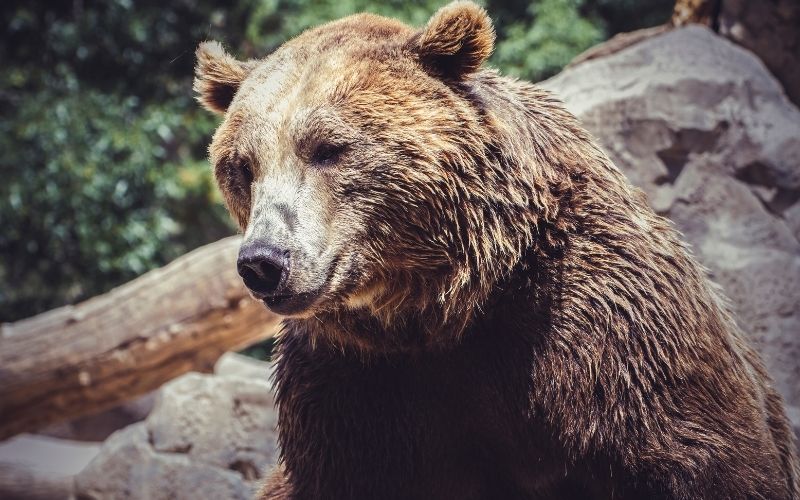
Spain does have its own species of bear – the Cantabrian brown bear.
It is so called as it lives in the Cantabrian mountains, though in past times it was found all over the Iberian peninsula.
This is an endangered species in Spain and Europe, and heavy fines apply to anyone who hunts or harms one of these creatures.
As the bear is timid and only found in one area, the chances of an encounter are minimal.
Fish
Weever fish
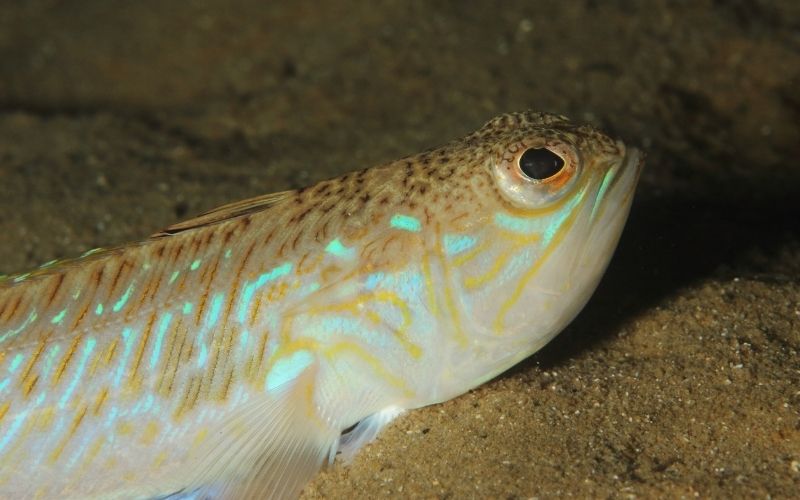
Weever fish are a fairly common occurrence on beaches throughout Europe, and they may be present in Spanish waters.
Although the creatures normally cause pain rather than actual harm, a Spanish teenager tragically died after being stung on the Costa Brava in 2020.
Weever fish may sometimes cause a severe allergic reaction known as anaphylactic shock, and can even trigger a heart attack.
In most cases, though, the result will be red, sore and swollen skin.
Tourist beaches are often regularly checked for weever fish, so do look out for signs locally – and stay away if warnings are put in place.
Dangerous animals in Spain – FAQs
Are there any predators in Spain?
There are several types of predatory animal found in Spain. These include the Cantabrian brown bear found in the mountains of the same name and the Iberian wolf.
Both tend to stay away from humans, but may attack is provoked – or very hungry.
The Spanish wild boar is also becoming a serious pest in some places, and attacks have even been known to take place in city parks.
Do you get tarantulas in Spain?
Spain has a number of dangerous spiders, but the tarantula’s bite is actually similar to a wasp or bee sting.
The species to really watch out for include the European black widow and the brown recluse spider, or fiddleback. Both have a nasty bite that may require urgent medical care.
What poisonous snakes live in Spain?
There are several venomous snake species in Spain. These include Lastaste’s viper, the false smooth snake, the asp viper, the Montpellier snake and Seoane’s viper. In the case of the Montpellier and false smooth snakes, however, rear fangs mean they’re less of a threat.
Are scorpions common in Spain?
A couple of Spanish scorpion species may cause a painful sting, though this will normally be no worse than a bee or wasp sting.
Scorpions are found throughout Europe – even in parts of the UK due to their accidental introduction from the mainland.
Which are the most dangerous animals in Spain?
The beautiful country of Spain does have its fair share of dangerous creatures, so it’s best to be aware, particularly if you will be encroaching on their preferred habitats.
If in doubt about what you’ve been bitten or stung by or your symptoms are severe, it’s wise to seek medical attention as soon as possible.
The same applies if you’re attacked by one of the more dangerous species.
From spiders, scorpions, insects and snakes to sea life, large predators and even hairy caterpillars, there are some creatures in Spain more than capable of delivering at least a painful sting or bite.
